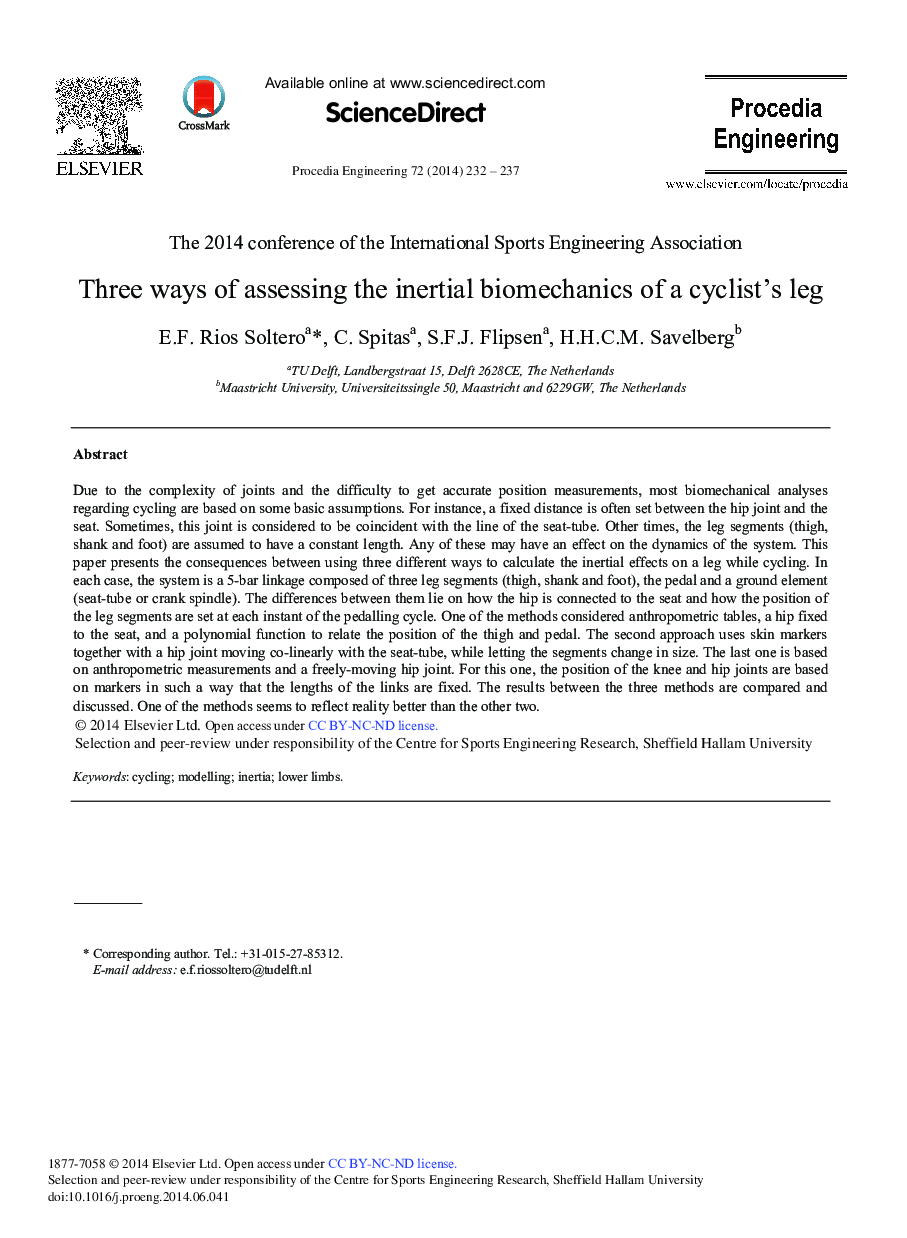| Article ID | Journal | Published Year | Pages | File Type |
|---|---|---|---|---|
| 858955 | Procedia Engineering | 2014 | 6 Pages |
Due to the complexity of joints and the difficulty to get accurate position measurements, most biomechanical analyses regarding cycling are based on some basic assumptions. For instance, a fixed distance is often set between the hip joint and the seat. Sometimes, this joint is considered to be coincident with the line of the seat-tube. Other times, the leg segments (thigh, shank and foot) are assumed to have a constant length. Any of these may have an effect on the dynamics of the system. This paper presents the consequences between using three different ways to calculate the inertial effects on a leg while cycling. In each case, the system is a 5-bar linkage composed of three leg segments (thigh, shank and foot), the pedal and a ground element (seat-tube or crank spindle). The differences between them lie on how the hip is connected to the seat and how the position of the leg segments are set at each instant of the pedalling cycle. One of the methods considered anthropometric tables, a hip fixed to the seat, and a polynomial function to relate the position of the thigh and pedal. The second approach uses skin markers together with a hip joint moving co-linearly with the seat-tube, while letting the segments change in size. The last one is based on anthropometric measurements and a freely-moving hip joint. For this one, the position of the knee and hip joints are based on markers in such a way that the lengths of the links are fixed. The results between the three methods are compared and discussed. One of the methods seems to reflect reality better than the other two.
